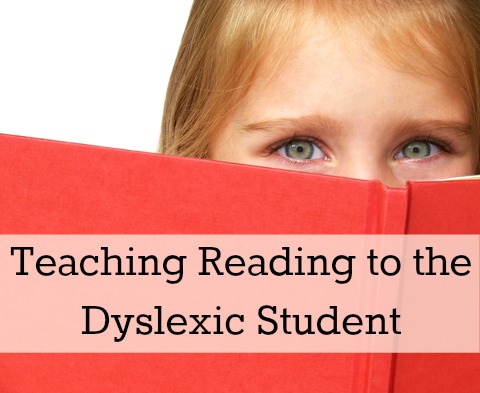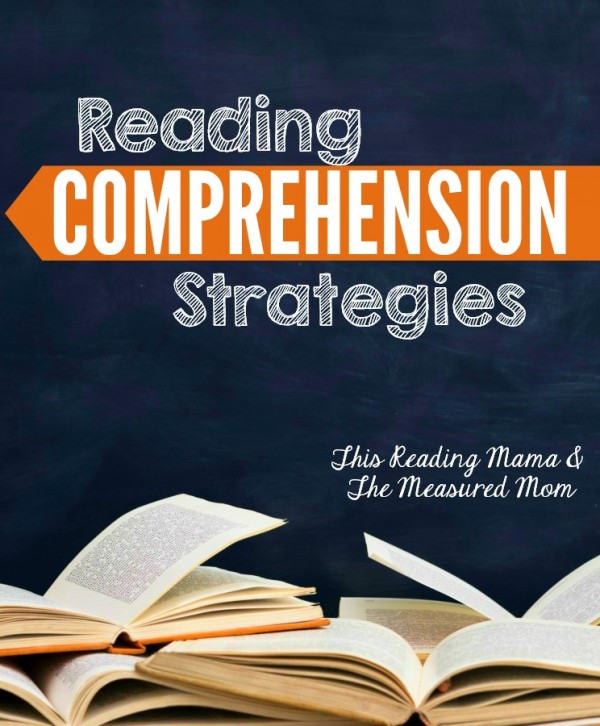I am honored to have Marianne Sunderland of Homeschooling with Dyslexia guest posting about dyslexia.
*This post contains affiliate links.
Teaching reading is such an incredible privilege. As an avid reader from an early age, my favorite books have become like friends to me. A large portion of my fondest childhood memories are of the great books I read. So when I had my own children, I filled my house with books and eagerly anticipated sharing my joy of reading with them.
Somehow, even though our first born was bright and articulate, reading did not come easily for him. We tried changing reading programs (more than once!), taking a break, moving ahead with the next lesson even though he hadn’t mastered the previous one, thinking he might eventually catch on. Finally, we hired an educational psychologist to perform a full battery of psycho-educational tests to help us figure out what was going on with him. That is when we first learned about dyslexia.
What is Dyslexia?
Researchers estimate that as many as 20% of the population have dyslexia. It is characterized by:
- slow, inaccurate reading
- terrible spelling
- difficulty with penmanship
- difficulty expressing self
- inattentiveness, distractibility
- child dreads going to school
Unfortunately, there is a lack of understanding of what causes these difficulties in learning to read despite the fact that there is a growing body of scientifically-based research on what dyslexia is and how to effectively teach dyslexics to read, write and spell. Unsuspecting parents, like in our family, go through everything from frustration to fear, and far too often, helplessness, in their quest to help their child.
Teaching Methods That Work
Dyslexic learners can all learn to read. It takes time, diligence and the right methods. While some children will learn to read fairly easily with any method, dyslexic learners need to be systematically and explicitly taught and retaught every aspect of reading. It simply does not come naturally and needs to be taught, every step of the way. The International Dyslexia Association publishes a booklet about the best instruction methods for children with dyslexia. These methods are based on the latest research as well as the consensus of thousands of educational therapists over 50 years. We’ll look at what the experts say about what to teach and how to teach and then look at some programs that can be used at home that follow these guidelines.
What to Teach
Phonemic Awareness: How to listen to a single word or syllable and break it into its individual sounds. Students should be able to change sounds, remove sounds and compare sounds all in their head. Research has shown that an early deficit in this area is a sure sign of reading problems in the future.
Sounds-Symbol Association: The knowledge of the various sounds in our language and their corresponding letter or combination of letters that represent those sounds. This includes blending sounds together into words and segmenting or taking whole words apart into individual sounds.
Syllabication Instruction: Instruction of the six basic syllable types and how these formations affect the composite letters’ sounds.
Morphology: The study of base words, roots, prefixes and suffixes.
Semantics: Instruction in reading comprehension strategies.
How to Teach
Most anything you will read about effective reading instruction now a days will talk about research-based instruction methods or the Orton-Gillingham method. The basic multi-sensory structured language technique known as the Orton-Gillingham approach was developed in the 1930s and 1940s. During the 1920s a neurologist named Samuel Orton began an intensive study of a group of people whom he called ‘word blind’. After studying what they could and couldn’t do, he took an interest in learning whether or not these children could learn to read. For many years he worked with Anna Gillingham and a team of others and eventually came up with an approach to teaching reading that taught the structure of sound-symbol relationships and used all of the senses to reinforce these associations. Since then, the Orton-Gillingham approach has been adapted and modified by institutions, agencies and private educational therapists.
Here are the individual facets of an effective reading program:
- Simultaneous & Multi-Sensory: Research has shown that dyslexics using all of their senses as they learn (visual, auditory, tactile and kinesthetic) are better able to store and retrieve information. Using as many of the senses as possible at once (simultaneously) is best.
- Systematic and Cumulative: Multi-sensory language instruction requires that the organization of material follows the logical order of the language. The sequence must begin with the easiest and most basic elements and progress methodically to more difficult concepts. Material must be taught systematically to strengthen memory. Introduce a rule, practice until is is mastered, and do lots of review.
- Direct instruction: Dyslexic learners do not naturally pick up the rules of written language. Every rule must be taught directly and practiced until mastered.
- Diagnostic Teaching: Teaching must be individualized and the student’s needs and progress must be constantly reassessed.
- Synthetic and Analytic Instruction: Multi-sensory, structured language programs should include both synthetic and analytic instruction. Synthetic instruction presents the parts of the language and then teaches how the parts work together to form a whole. Analytic instruction presents the whole and teaches how this can be broken down into its component parts.
Research-based Reading Programs to use From Home
These methods may sound confusing but there are specific reading programs that are designed for teaching a dyslexic student to read at home. Some of the most effective, and therefore popular, programs for at home reading instruction are:
- Reading Horizons
- All About Reading
- Lexercise
- Barton Reading and Spelling Method
If you know someone that you think may be dyslexic, know that they can learn to read, spell and write successfully. The unique learning style of the dyslexic mind means that the approach for teaching will necessarily be different than other kids, but it can be done!
For more information on dyslexia, including signs of dyslexia in different ages, myths and facts about dyslexia, testing options, navigating the public school, homeschooling the dyslexic child, when and how to hire an educational therapist, and information on the older dyslexic in high school and college, plus teaching tips for schoolroom teachers, you may be interested in my new ebook, Dyslexia 101.
* * *
Marianne Sunderland is a homeschooling mother of eight lively children ages 2 to 21, including adventurous and homeschooled sailors, Zac and Abby Sunderland, known for their world-record setting around the world sailing campaigns. Marianne is passionate about encouraging families to discover and nurture their children’s God-given gifts and talents, in and outside of the classroom. She also encourages women to joyfully love and serve their families. Marianne’s blog, Homeschooling with Dyslexia, provides weekly articles on dyslexia and homeschooling that will bless and encourage you!
You Might Also Like
- Reading Comprehension Strategies {a 10-week series}
- 3 Important Skills Needed for Reading
- Tips for Teaching Letters and Sounds
- 5 Days of Multi-Sensory Reading Activities
- 10 Things Struggling Readers Need
Follow This Reading Mama’s board Struggling Readers on Pinterest.
Stay connected to This Reading Mama so you don’t miss a thing:
- Subscribe by email {get really cool FREEBIES when you do!}
- Google+
~Becky



Ortan-Gillingham is a beautiful way to teach that utilizes all we now can know about the reading brain due to more recent research using fMRI. Slingerland is the classroom approach to Ortan-Gillingham and is used to teach is all language based curricula in a few schools around the U.S. It is what I taught and loved for many years. I now tutor from home and use it’s principles to help my own children. Thank you for highlighting such an misunderstood topic in a clear and concise way.
I must get the book!
You mention that your books are like friends. I feel the same about mine. One concern with a child who struggles with reading is wondering whether this is something that she will never experience. We’ve been able to keep a love of books, so far, by extensive reading aloud but obviously won’t be able to carry this into her adult life. Perhaps audio books may help?
My daughter has dyslexia and we love audio books now that she is 9 and wants to have a private world with her books. She follows along in her own copy of the novel. They are a gift because I had the same worry- characters were my childhood friends! We are lucky that her school is working hard with these methods. I find the phonemic awareness and the learning deep before moving on are key to her success. Every child is different, so learning different approaches is great. Thank you!
As a mum of a dyslexic 7 year old son, I sought a concise method – as you so well described above – to systematically work through with him. I’ve just completed training in the Sound Reading System and have been blown away by it. It’s success speaks for itself in the statistical evidence of improvement in all the students that complete the course. A simple code that you can work through incrementally to build up knowledge and in a safe environment – so important that kids feel they’re not being continually tested! It has been devised by Diane Guinness and Fiona Novella – please look it up its well worth the effort. It can been used from age 5 through to adult, any catch up reader or as in the case of my son – one who has been let down by conventional classroom practices. Thanks so much for your brilliant site.
Thank you for this post! I love how simply you were able to explain dyslexia! I too have fallen in love with helping these children who struggle. They truly have amazing gifts. I use Orton-Gillongham research in my tutoring (both in person and online) and it works wonders! Many of my students are in the later grades in elementary school and have not been able to find success in reading until they started tutoring. It’s amazing to see how quickly they catch on once they have the correct tools. Their confidence and reading abilities soar and that’s a joy to see!
how can you find out if your children have Dyslecia?
Marianne Sunderland of Homeschooling with Dyslexia would be the best person to ask about that. I wish I had more specific info for you.
I want to encourage everyone to use “people first” language. Do this by putting the person first. For example, my son/daughter who has dyslexia not my dyslexic son/daughter. I personally have two daughters who each have been diagnosed with a disability. One has cerebral palsy and the other is visually-impaired while dealing with dyscalculia. They are my daughters first…I don’t look at them and see their disability first. When you put their disability or different way of learning first, it diminishes the human being that they are and focuses on how they learn or what and how they are able to produce. Thanks! It has been particularly painful for me to read the wonderful strategies, educated tips and heartfelt comments written in this article and the following blog because of all the times I read “dyslexic learners” or “my dyslexic son”. It’s obvious that I’m rather sensitive about this issue, so thanks for reading my comments.